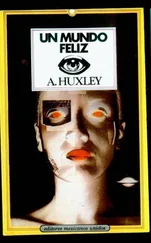Tests for preternatural strength were carried out by Dr. Mark Duncan, the Scottish physician who was the Principal of the Protestant College at Saumur. Grasping the wrists of one of the demoniacs, he found it easy to prevent her from striking him or from breaking out of his control. After this humiliating display of diabolical weakness, the exorcists confined themselves to inviting unbelievers to stick their fingers in the good sisters’ mouths, and see if the devil would bite them. When Duncan and the others declined the invitation, it was held by all right-thinking people to be an acknowledgment of the reality of the possession.
From all this it must be evident that if, as the Roman Church maintained, ESP phenomena and PK effects are the hall-mark of diabolic possession (or, alternatively, are extraordinary graces), then the Ursulines of Loudun were merely hysterics who had fallen into the hands, not of the fiend, not of the living God, but of a crew of exorcists, all superstitious, all hungry for publicity, and some deliberately dishonest and consciously malevolent.
In the absence of any evidence for ESP or PK, the exorcists and their supporters were compelled to fall back on even less convincing arguments. The nuns, they asserted, must be possessed by devils; for how, otherwise, could one account for the shamelessness of their actions, the smut and irreligion of their conversation? “In what school of rakes and atheists,” asks Father Tranquille, “have they learned to spew forth such blasphemies and obscenities?” And with a touch almost of boastfulness, de Nion assures us that the good sisters “made use of expressions so filthy as to shame the most debauched of men, while their acts, both in exposing themselves and in inviting lewd behaviour from those present, would have astounded the inhabitants of the lowest brothel in the country.” [46]As for their oaths and blasphemies—these were “so unheard of that they could not have suggested themselves to a merely human mind.”
How touchingly ingenuous this is! Alas, there is no horror which cannot suggest itself to human minds. “We know what we are,” says Ophelia, “but we know not what we may be.” Practically all of us are capable of practically anything. And this is true even of persons who have been brought up in the practice of the most austere morality. What is called ‘induction’ is not confined to the lower levels of the brain and nervous system. It also takes place in the cortex, and is the physical basis of that ambivalence of sentiment which is so striking a feature of man’s psychological life. [47]Every positive begets its corresponding negative. The sight of something red is followed by a green after-image. The opposing muscle groups involved in any action automatically bring one another into play. And on a higher level we find such things as a hatred that accompanies love, a derision begotten by respect and awe. In a word, the inductive process is ubiquitously active. Sister Jane and her fellow nuns had had religion and chastity drummed into them from childhood. By induction, these lessons had called into existence, within the brain and its associated mind, a psycho-physical centre, from which there emanated contradictory lessons in irreligion and obscenity. (Every collection of spiritual letters abounds in references to those frightful temptations against the faith and against chastity, to which the seekers after perfection are peculiarly subject. Good directors point out that such temptations are a normal and almost inevitable feature of the spiritual life and must not be permitted to cause undue distress.) [48]At ordinary times these negative thoughts and feelings were repressed or, if they rose into consciousness, were by an effort of will denied any outlet in speech or action. Weakened by psycho-somatic disease, made frantic by her indulgence in forbidden and unrealizable phantasies, the Prioress lost all power to control these undesirable results of the inductive process. Hysterical behaviour is infectious, and her example was followed by the other nuns. Soon the whole convent was throwing fits, blaspheming and talking smut. For the sake of a publicity which was thought to be good for their respective orders and the Church at large, or with the deliberate intention of using the nuns as instruments for the destruction of Grandier, the exorcists did everything in their power to foster and increase the scandal. The nuns were forced to perform their antics in public, were encouraged to blaspheme for distinguished visitors and to tickle the groundlings with displays of extravagant immodesty. We have already seen that, at the beginning of her malady, the Prioress did not believe herself to be possessed. It was only after her confessor and the other exorcists had repeatedly assured her that she was full of devils that Sister Jane came at last to be convinced that she was a demoniac and that her business, henceforth, was to behave as such. And the same was true of some at least of the other nuns. From a pamphlet published in 1634 we learn that Sister Agnes had frequently remarked, during exorcism, that she was not possessed, but that the friars had said she was and had constrained her to undergo exorcism. And “on the preceding twenty-sixth of June, the exorcist having by mistake let fall some burning sulphur on Sister Claire’s lip, the poor girl burst into tears, saying that, ‘Since she had been told she was possessed, she was ready to believe it, but that she did not on that account deserve to be treated in this way.’” The work begun spontaneously by hysteria was completed by the suggestions of Mignon, Barré, Tranquille and the rest. All this was clearly understood at the time. “Granted that there is no cheat in the matter,” wrote the author of the anonymous pamphlet cited above, “does it follow that the nuns are possessed? May it not be that, in their folly and mistaken imagination, they believe themselves to be possessed, when in fact they are not?” This, continues our author, can happen to nuns in three ways. First, as a result of fasts, watchings and meditations on hell and Satan. Second, in consequence of some remark made by their confessor—something which makes them think they are being tempted by devils. “And thirdly, the confessor, seeing them act strangely, may imagine in his ignorance that they are possessed or bewitched, and may afterwards persuade them of the fact by the influence he exercises over their minds.” In the present case the mistaken belief in possession was due to the third of these causes. Like the mercurial and antimonial poisonings of earlier days, like the sulpha poisoning and serum-fevers of the present, the Loudun epidemic was an “iatrogenic disease,” produced and fostered by the very physicians who were supposed to be restoring the patients to health. The guilt of the exorcists seems the more enormous when we remember that their proceedings were in direct violation of the rules laid down by the Church. According to these rules, exorcisms were to be performed in private, the demons were not to be allowed to express their opinions, they were never to be believed, they were consistently to be treated with contempt. At Loudun, the nuns were exhibited to enormous crowds, their demons were encouraged to hold forth on every subject from sex to transubstantiation, their statements were accepted as gospel truth and they were treated as distinguished visitors from the next world, whose utterances had the authority almost of the Bible. If they blasphemed and talked bawdy—well, that was just their pretty way. And anyhow bawdry and blasphemy were box-office. The faithful fairly lapped them up and came back, in their thousands, for more.
Supernatural blasphemy, more than human bawdry—and if these were not sufficient proofs of diabolic possession, what about the nuns’ contortions, what about their exploits in the acrobatic field? Levitation had quickly been ruled out; but if the good sisters never rose into the air, they at least performed the most amazing feats on the floor. Sometimes, says de Nion, “they passed the left foot over the shoulder to the cheek. They also passed their feet over the head, until the big toes touched the nose. Others again were able to stretch their legs so far to the left and right that they sat on the ground, without any space being visible between their bodies and the floor. One, the Mother Superior, stretched her legs to such an extraordinary extent that, from toe to toe, the distance was seven feet, though she herself was but four feet high.” Reading such accounts of the nuns’ performances, one is forced to the conclusion that, as well as naturaliter Christiana , the feminine soul is naturaliter Drum-Majoretta . So far as the Eternal Feminine is concerned, a taste for acrobacy and exhibitionism would seem to be built-in, only awaiting a favourable opportunity to manifest itself in handsprings and back somersaults. In the case of cloistered contemplatives, such opportunities are not of frequent occurrence. It took seven devils and Canon Mignon to create the circumstances in which, at long last, it became possible for Sister Jane to do the splits.
Читать дальше











